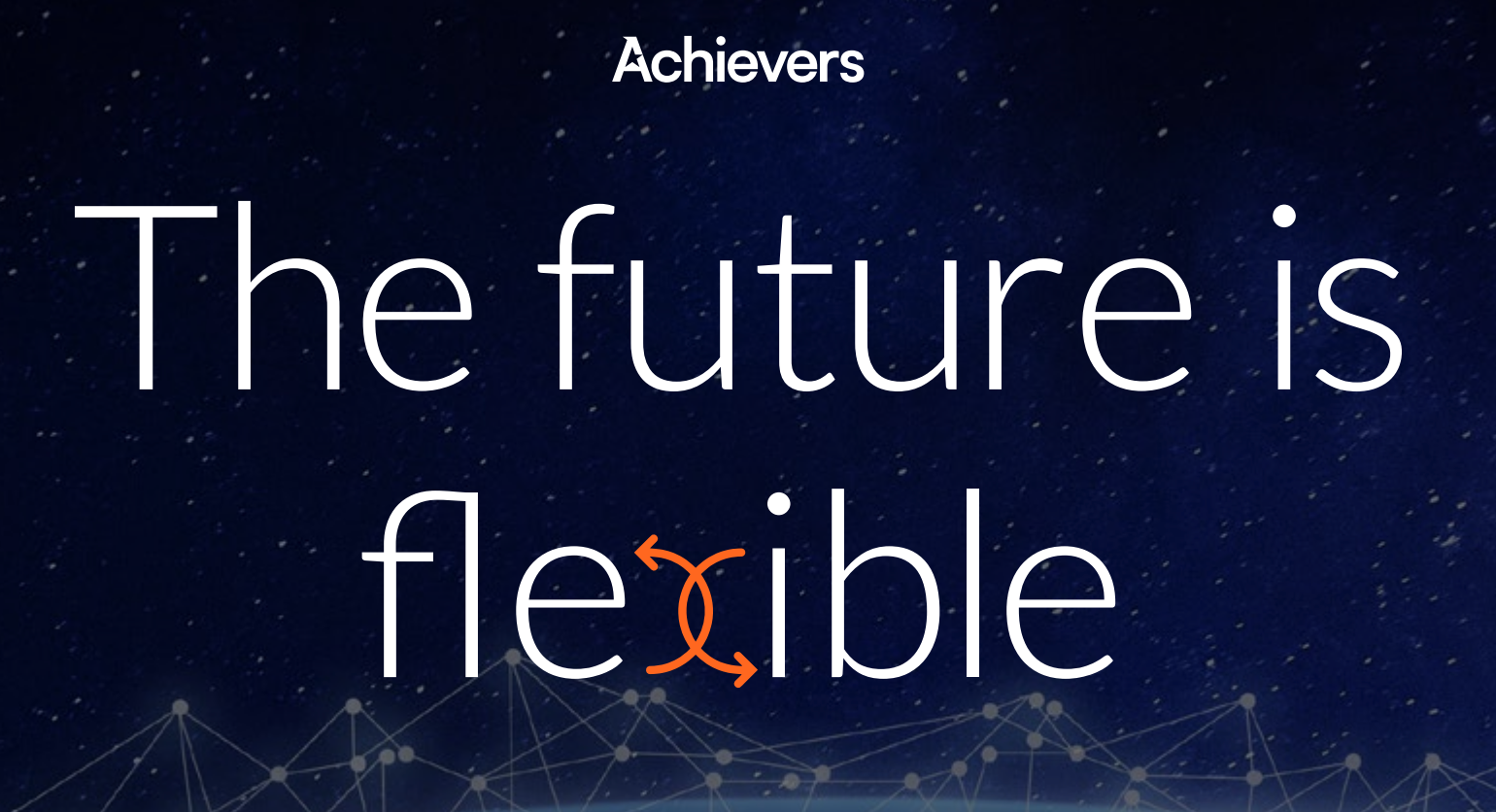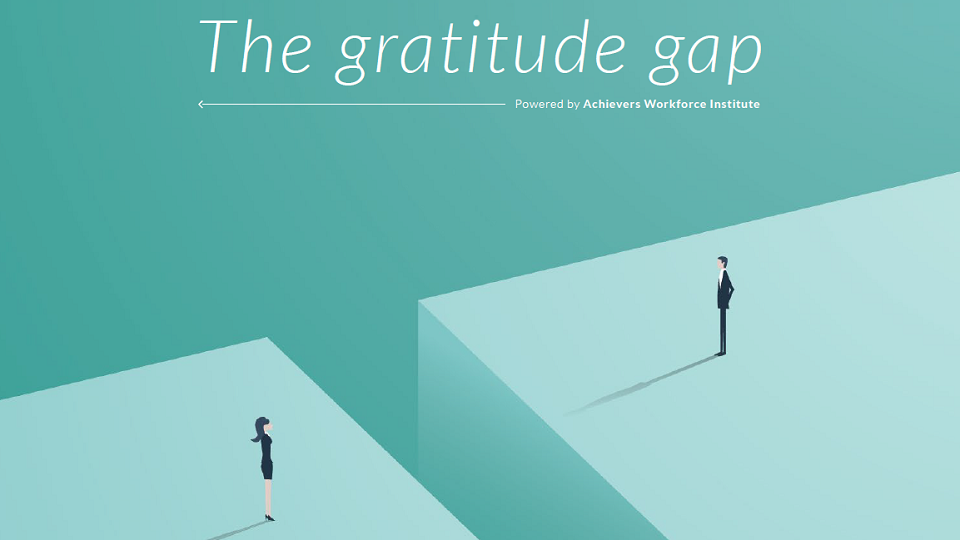Table of contents
Annual employee awards may seem like somewhat of a relic compared to the in-the-moment, frequent recognition we often talk about, but do they still have a place in today’s recognition and rewards program mix?
The Achievers Workforce Institute team recently had the opportunity to lead a group discussion on the future of employee awards, with HR leaders from the finance, healthcare, and telecom sectors sharing their challenges, best practices, and future plans. Their feedback and experiences align with our recent research around the state of awards today and what’s coming in the future.
Let’s take a look.
What’s trending today
For better or worse, annual employee awards are where it’s at for the majority of organizations, with most companies spending 4-9% of payroll costs on company-wide annual awards. While most HR leaders (89%) believe that awards drive performance, many of our discussion participants acknowledged that annual awards aren’t a holistic solution to motivate all employees.
One discussion participant noted that their organization is focused on a prestigious award that recognizes just 0.5% of their employees. Another just kicked off a new annual award to recognize their best of the best, which accounts for 10% of their employee population. While both are excited about the performance these annual awards drive, each understands that they should also be focusing on their other groups as well.
What motivates employees?
When we asked employees to rank what would motivate them the most to work harder, the #1 answer was monthly recognition, with a staggering 40% of respondents rating it as their top answer — more than double any of the other options.
Here are the runners-up:
- Consistently receiving at least monthly recognition for the impact I’m having in my role
- Quarterly awards recognizing someone from every team
- Annual awards recognizing someone from every team
- Quarterly awards recognizing a few people at the company
- Annual awards recognizing a few people at the company
These results align with AWI recommendation to introduce quarterly company awards and aim for monthly recognition frequency for all employees. This will have a bigger impact on performance than annual employee awards alone, which only motivate employees for a short time (even for those who win) and could actually be demotivating for employees that feel left out.
The unintended demotivational effect of annual awards
Perhaps surprisingly, employee sentiment around annual employee awards that recognize performance and achievements is largely negative, with:
- Only half of employees say that their company has annual awards with a prize they value, indicating that at best, these awards are motivating just half of the workforce.
Action:
Learn how to provide meaningful recognition with more inspired awards ideas. - Two-thirds (66%) of employees say they do not expect to win an award this year and 44% say it is unlikely they will ever win a company award. This shows that annual awards could be actively demotivating people who feel left out.Action: Look for ways to ensure that all employees have an equal opportunity to win and that diversity in nominations is encouraged.
- Only 29% of people disagree with the statement “My company recognizes the same people every year”, indicating that many employees feel that specific people are recognized repeatedly in annual awards.Action: Awarding the same individuals year after year leaves isn’t much fun for everyone else. Be sure that you aren’t only motivating the same handful of employees who consistently overachieve.
What kind of awards do employees want?
Employees say that annual monetary recognition is better than nothing, but worse than average.
Annual monetary recognition alone is not enough to drive higher performance and business results. For middle-of-the-road results, monthly social recognition will give a boost to the impact of annual monetary awards, but best-in-class is coupling quarterly monetary with at least monthly social drives above average business results.
Rethinking the nomination process
One theme that repeatedly came up during our discussion around awards (annual and otherwise) was around the intake of awards nominations and how to modify this process so that it is more:
- Automated
- Diverse
- Fair
Automation
For many organizations, volume of nominations isn’t the concern, it’s the quality. This leaves the HR team with the tall task of combing through hundreds (or more!) of nominations to weed out the ones that either don’t meet the minimum criteria or aren’t suitable for the award type.
For instance, one organization noted that they receive far too many social recognitions for their annual employee awards nominations. They are challenged with educating their employees on the merit and parameters of the award. How do they ensure that it doesn’t simply become points awarded for a job well done?
Ideas to address this issue:
- Leverage your employee rewards platform to streamline and manage the nomination intake process
- When designing something new, keep it within the platform from the get-go — if it becomes manual, it’s more difficult to integrate and automate later
- Create specific questions/criteria to be answered on the nomination form
- Provide an outline/tips on how to write a good nomination and have a minimum and maximum word count to ensure quality nominations that aren’t overwhelming to review
Diversity
A HR leader from a major telecom company shared that they see a lot of repeat annual awards winners, which is great for motivating that group, but it means that they aren’t seeing new and different teams achieve a win.
One gap that the group identified was manager effectiveness in this area. How can organizations
educate and motivate managers to inspire more diverse nominations?
Some of their ideas to address this issue were:
- Educate managers on the role recognition and rewards play in retaining great employees
- Ensure that the communications around the awards process is centralized, so you aren’t replying fully on managers to promote employee nominations
- Incentivize managers with a top leader award (most team members nominated)And to help ensure that peer-to-peer recognition draws more diversity in the number of nominees, organizations can try tactics like entering nominators into a draw for points with each nomination.
Fairness in the selection process
- As nominations roll in, you need a team in place to weed out the one-liners, sort and group nominations by employee, and evaluate each nomination with equity.In the majority of organizations, this task falls on the shoulders of the HR team — who already have a lot on their plate. Some organizations have elected to form a review committee to help with this process. While the obvious advantage of this is the distribution of the workload, there are other advantages. Inviting employees or managers from different areas of the business will help:
- Ensure the consideration of all eligible nominations
- Provide equity in the selection process
- Create greater engagement in the awards process across the organization
How are HR leaders managing their awards budgets?
It’s great to see the awards program you’ve created take off, with employees and managers excited to nominated one another. But how do you (and should you) respect your awards budget by limiting the number of winners when you have a large number of high-quality nominations?
When asked, there was a significant difference between the annual employee awards value offered by each of the organizations in our discussion group, ranging from $500-$5,000. In larger organizations, this expense can add up fast. As organizations continue to raise the bar on what great employee performance looks like, it stands to reason that the value of the award should reflect the effort made by employees. But this doesn’t necessarily mean that you have to increase your spending on awards.
Ways to manage awards budgets include:
- Promote quarterly and annual awards evenly, to diversify and distribute spend on awards
- Encourage more frequent non-monetary recognition to keep employees engaged year-round
- Centralize awards budgets rather than leaving them for individual business units to manage
Getting started: Actions you can take today
To get a clearer picture of just how effective your awards program is today, try reflecting on each of these three areas to evaluate, organize, and optimize your approach:
Step 1: Evaluate your current awards
- Is it driving performance?
- Are most employees feeling left out?
- Will there be backlash if you reduce or remove awards?
Step 2: Prioritize and align organizational objectives
- What behaviors and results are you trying to drive?
- Is there evidence that your top employees effectively drive those results?
- What initiatives would be more effective?
Step 3: Make sure you motivate the middle
For example, consider that:
- The top 20% of your employees may be motivated by annual awards, while
- the bottom 20% of your employees are disengaged
- How can you move the needle on engagement and performance for the middle 60%?
Avoiding common pitfalls
Here are our recommendations for avoiding common awards program pitfalls by modernizing your approach to awards.
Here’s how:
Recommendation #1: Make the move to quarterly awards
The motivational effect of annual rewards fades over a matter of mere months, if not weeks. A quarterly award schedule, even with lower monetary value per award, will boost motivation more frequently, driving performance year-round.
Recommendation #2: Continue to offer tangible, non-cash rewards
Research shows that tangible, non-monetary rewards such as merchandise, gift cards, or experiences, drive higher individual performance than cash-only rewards.
Recommendation #3: Refocus on monthly manager recognition
Repurpose part of your annual awards to drive higher recognition frequency for the middle 60%. Increasing average recognition frequency to monthly or weekly will have a significant impact on engagement and performance.
Stay informed on the future of awards
Subscribe for the latest research and insights from Achievers Workforce Institute and get your copy of the 2023 State of Recognition Report now.




